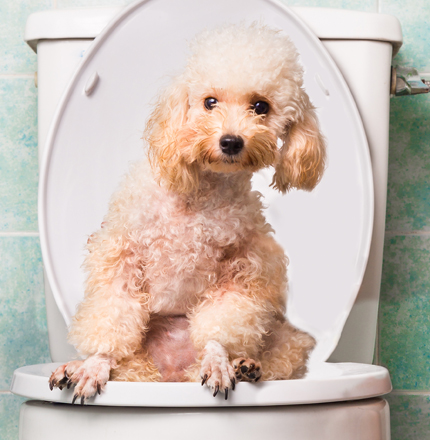We have stumbled upon this post on 10 Things You Should Never Flush Down The Toilet listed below on the net and figured it made perfect sense to talk about it with you on this page.

When it concerns throwing away waste, particularly animal waste, lots of people typically resort to the hassle-free alternative of flushing it down the commode. Nevertheless, this apparently very easy service can have severe consequences for the setting and public health. In this article, we'll explore why flushing animal waste down the bathroom is a negative concept and provide different methods for correct disposal.
Introduction
Correct waste disposal is vital for keeping ecological sustainability and public health. While it might seem safe to flush animal waste down the bathroom, it can result in numerous concerns, both for the environment and human wellness.
Risks of flushing animal waste
Ecological impact
Purging pet waste presents harmful microorganisms and virus into waterways, which can adversely affect water communities. These pathogens can contaminate water sources and damage marine life, interrupting delicate ecological communities.
Public health concerns
Pet waste has damaging bacteria such as E. coli and Salmonella, which can present severe health and wellness risks to humans. Purging pet waste down the toilet can pollute water products, bring about the spread of illness and infections.
Alternatives to flushing
Rather than purging animal waste down the commode, there are numerous alternative disposal techniques that are more environmentally friendly and hygienic.
Composting
Composting animal waste is an eco-friendly way to dispose of it. By composting, organic matter is broken down into nutrient-rich soil, which can be used to fertilize yards and plants.
Land fill disposal
Disposing of pet waste in a land fill is one more option. While not as eco-friendly as composting, it is a more secure option to flushing, as it avoids the contamination of water resources.
Family pet waste disposal systems
There are customized pet dog waste disposal systems readily available that safely and hygienically take care of pet waste. These systems frequently make use of enzymes to break down waste and remove smells.
Actions to appropriate animal garbage disposal
To ensure correct disposal of pet waste, comply with these actions:
Scooping and bagging waste
Frequently scoop and bag animal waste utilizing biodegradable bags. This avoids waste from polluting the setting.
Using marked waste bins
Dispose of bagged animal waste in designated waste containers, such as garden compost containers or garbage dump containers. Prevent flushing it down the commode in all costs.
Cleaning can and animal locations frequently
On a regular basis clean can and animal locations to stop the buildup of waste and bacteria. Use pet-safe cleansing items to keep hygiene.
Advantages of correct disposal techniques
Adopting correct disposal techniques for pet waste offers a number of advantages:
Decreased environmental pollution
Proper disposal approaches reduce the risk of environmental pollution, securing waterways and environments from contamination
Lessened threat of water contamination.
By avoiding flushing animal waste down the commode, the risk of water contamination is significantly reduced, securing public health.
Improved cleanliness and health
Appropriate disposal techniques advertise better sanitation and hygiene, developing a more secure atmosphere for both people and animals.
Verdict
Finally, purging animal waste down the toilet is unsafe to the setting and public health. By embracing different disposal approaches and following proper waste monitoring techniques, we can minimize the negative impact of pet waste and contribute to a cleaner, healthier world.
What To Do With Dog Poo – The Do's And Don'ts Of Disposing Of Faeces
Dog poo bins
Some councils provide dedicated dog waste bins in popular dog-walking areas that can take dog poo that has been bagged but you can legally dispose of dog waste in any public litter bin, as long as it is securely bagged. This also applies to your wheelie bin at home.
Do not flush
Water companies do not recommend flushing dog faeces down the toilet because certain parasites can survive the water processing treatment and are potentially harmful to humans. You should also never consider flushing dog poo that has been bagged down the toilet as the bags will not break down and instead create severe blockages in the sewage system.
In the woods
The Forestry Commission promotes a ‘stick and flick’ method for dealing with waste in the woods. This means finding a stick and using it to flick any poo from off the path so that it is out of the way of other walkers. You could also bury it as long as it is not in an area where there might be livestock.
Livestock
Parasites found in dog poo can be transmitted to livestock if they inadvertently eat infected faeces that has been left on grazing land. This could result in the death of sheep or abortion in cattle so you should always make sure you pick up your dog’s waste in fields where livestock could be present.

Hopefully you enjoyed our post about . Thanks so much for finding the time to browse our short article. Sharing is nice. Helping others is fun. Thanks so much for your time spent reading it.
Call Today
Comments on “What Flushing Animal Waste Can be Not Advisable”